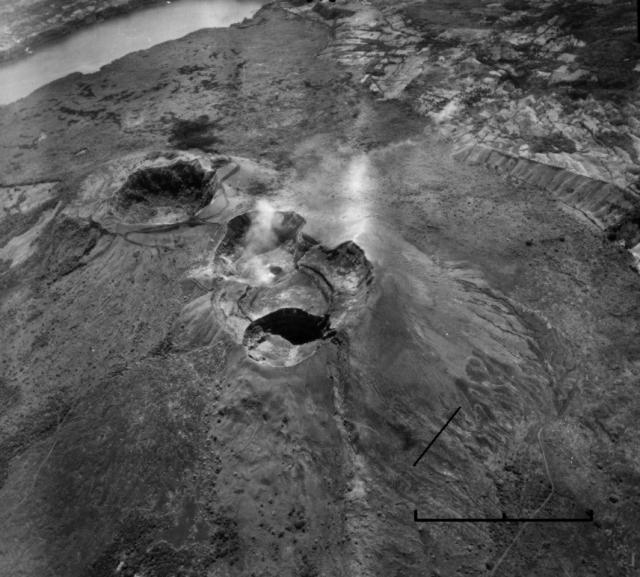Report on Masaya (Nicaragua) — April 1978
Scientific Event Alert Network Bulletin, vol. 3, no. 4 (April 1978)
Managing Editor: David Squires.
Masaya (Nicaragua) Increasing lava lake activity at pit crater
Please cite this report as:
Global Volcanism Program, 1978. Report on Masaya (Nicaragua) (Squires, D., ed.). Scientific Event Alert Network Bulletin, 3:4. Smithsonian Institution. https://doi.org/10.5479/si.GVP.SEAN197804-344100
Masaya
Nicaragua
11.9844°N, 86.1688°W; summit elev. 594 m
All times are local (unless otherwise noted)
The past four months have produced a gradual increase in the intensity of activity at Masaya. Fissures have appeared in the floor of Santiago Crater (figure 1) a collapse feature that formed, along with neighboring San Pedro crater, in 1858. The vent opening about 100 m below the rim of Santiago's pit crater has widened to about three times its size of a few months ago. The persistent lava lake inside the pit crater is usually not visible from Santiago's rim, but splashes of lava can occasionally be seen and minor amounts of lava clots are sometimes thrown from the vent. When the volcano was visited in late March, rare bursts of scoria reached the rim of the pit crater. Gas emission was strong, but has not seriously damaged nearby coffee trees.
Geological Summary. Masaya volcano in Nicaragua has erupted frequently since the time of the Spanish Conquistadors, when an active lava lake prompted attempts to extract the volcano's molten "gold" until it was found to be basalt rock upon cooling. It lies within the massive Pleistocene Las Sierras caldera and is itself a broad, 6 x 11 km basaltic caldera with steep-sided walls up to 300 m high. The caldera is filled on its NW end by more than a dozen vents that erupted along a circular, 4-km-diameter fracture system. The Nindirí and Masaya cones, the source of observed eruptions, were constructed at the southern end of the fracture system and contain multiple summit craters, including the currently active Santiago crater. A major basaltic Plinian tephra erupted from Masaya about 6,500 years ago. Recent lava flows cover much of the caldera floor and there is a lake at the far eastern end. A lava flow from the 1670 eruption overtopped the north caldera rim. Periods of long-term vigorous gas emission at roughly quarter-century intervals have caused health hazards and crop damage.
Information Contacts: D. de Jerez, Parque Nacional Volcán Masaya; D. Shackelford, CA.


